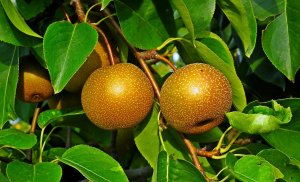What can I substitute for Asian Pears?
If you’re looking for suitable substitutes for Asian pears, you can consider using other types of pears or apples, depending on the specific recipe or dish you are preparing. Here are a few options:
- European Pears: Varieties such as Bartlett, Anjou, or Bosc pears can be used as substitutes for Asian pears in most recipes. While they have a different texture and flavor profile, they can still work well in salads, desserts, and cooked dishes.
- Apples: Many apple varieties can provide a similar crunch and sweetness to Asian pears. Choose crisp varieties like Granny Smith, Honeycrisp, Pink Lady, or Gala apples, depending on your preference and the flavor profile you desire.
- Jicama: Although not a pear or apple, jicama can be a suitable substitute in certain recipes. It has a similar crunchy texture and mild, slightly sweet taste. Jicama can be used in salads, slaws, or even as a raw snack.
- Persimmons: Depending on the recipe, certain types of persimmons, such as Fuyu, can be used as a substitute. They have a unique sweet flavor and a firm texture that can work well in salads or desserts.
Remember that while these alternatives may not exactly replicate the taste and texture of Asian pears, they can still provide a pleasant and flavorful addition to your dishes. Consider experimenting with different options to find the one that best suits your needs and preferences.
What are Asian Pears?
Asian pears, also known as apple pears, are a type of fruit that originated in East Asia. They are called “Asian pears” because they are primarily grown and consumed in countries like China, Japan, and Korea. These pears are distinct from European pears in terms of their appearance, texture, and flavor.
Asian pears are typically round and crisp, resembling apples in their shape and texture. They have a thin, edible skin that can range in color from yellow to brown, depending on the variety. The flesh of Asian pears is juicy, sweet, and crunchy, similar to a cross between an apple and a pear. The flavor is often described as refreshing and slightly floral.
One notable characteristic of Asian pears is their firmness. Unlike European pears, which soften as they ripen, Asian pears are typically enjoyed when they are still firm. This gives them a unique and distinct texture compared to other pear varieties.
Asian pears are commonly eaten fresh as a snack or used in salads, desserts, and Asian cuisine. They can be sliced and eaten as is, added to fruit salads, or incorporated into dishes such as stir-fries, jams, and pies. They are also used in the production of juices, ciders, and alcoholic beverages.
Popular Asian pear varieties include Hosui, Shinseiki, Nijisseiki (also known as 20th Century), and Shinko, among others. These varieties may vary slightly in taste, texture, and appearance, but they all share the crisp and juicy characteristics that define Asian pears.
Okay, before we look at your Asian pear substitute options, let’s deal with that empty cupboard situation!
Where can I buy Asian pears?
If you want to be more prepared and ensure you don’t run out of Asian pears then you should stock up now.
Nowadays most delicatessens and specialist supermarkets stock Asian pears. You can buy fresh, tinned, or dried products.
Or if you prefer you can also purchase Asian pears on-line. Here is a link for a pack of 16 ounces of dried Asian pears.
So why not jump on and place your order today.
STOCK UP NOW!
Natural Asian pears grown in Pennsylvania with a juicy delicious taste.
100% Asian Pears.
Rich in fiber and preservative free.
What can I substitute for Asian Pears?
Here are some of the best ingredients to substitute the flavor and role that Asian pears provide in your recipes.
- European Pears
- Apples
- Jicama
- Persimmons
Asian pear substitutes
European pears
When using European pears as a substitute for Asian pears, here are some general guidelines to follow:
- European pears tend to be softer and juicier than Asian pears when fully ripe. Keep in mind that if the recipe calls for the crispness of Asian pears, the texture of European pears may be slightly different. Choose pears that are ripe but still firm to help retain some of the crunch.
- European pears have a sweeter and milder flavor compared to Asian pears. Consider adjusting the sweetness or acidity of the recipe accordingly. You may need to add a bit more sweetness or acidity, such as lemon juice, to balance the flavors.
- If the recipe requires cooking or baking the Asian pears, European pears can be used in a similar way. They can be poached, roasted, or incorporated into pies, tarts, or cakes. Just keep in mind that European pears may become softer and more delicate when cooked, so adjust cooking times and methods as needed.
- European pears can be a great substitute for Asian pears in salads or raw preparations. Slice or dice the pears and use them in fruit salads, green salads, or slaws. They can add a sweet and juicy element to the dish.
- Consider the flavor profile of European pears when using them as a substitute. They pair well with ingredients like cheese (such as blue cheese or goat cheese), nuts (such as walnuts or almonds), honey, cinnamon, ginger, and vanilla. Incorporating these complementary flavors can enhance the overall taste of the dish.
Remember that experimenting and adjusting the recipe based on personal preference is part of the cooking process. Be open to adapting and exploring different flavors and textures to achieve a delicious result with European pears as a substitute for Asian pears.
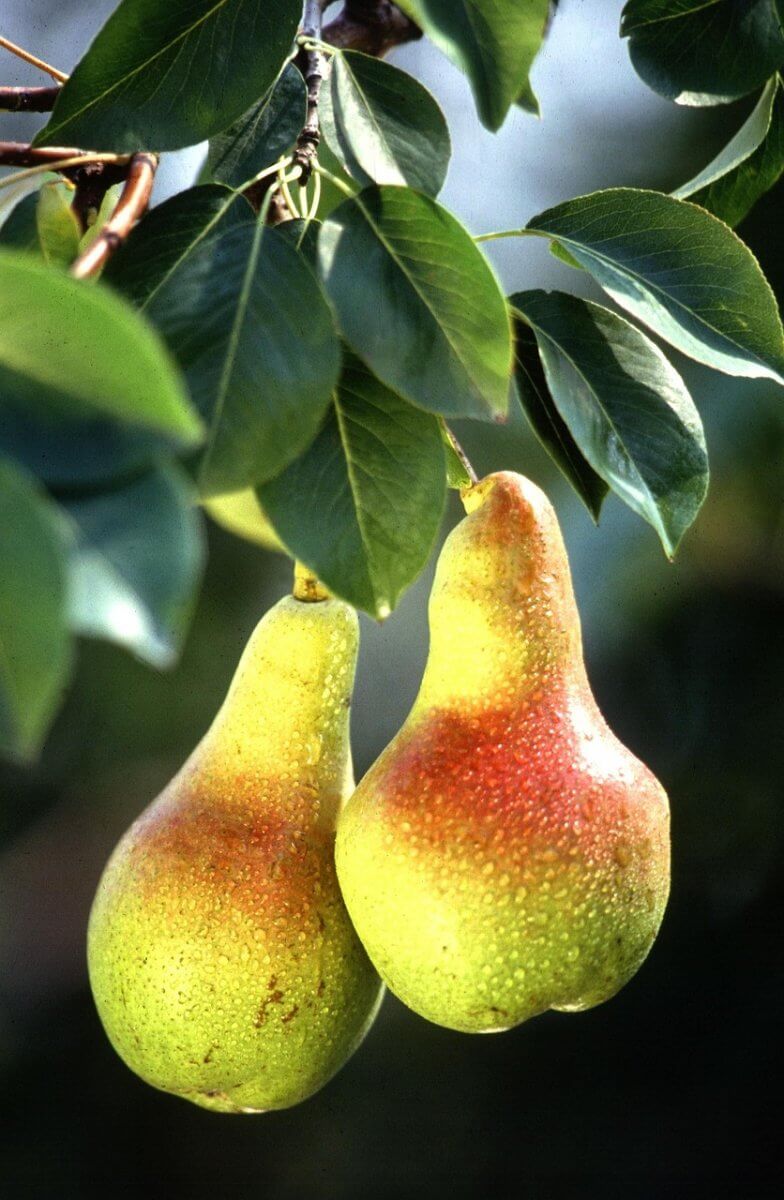
Apples
When using apples as substitutes for Asian pears, here are some tips on how to incorporate them into your recipes:
- Asian pears have a crisp and firm texture, so it’s best to choose apple varieties that are also crisp and firm. Examples include Granny Smith, Honeycrisp, Gala, or Fuji apples. Select apples that are ripe but still hold their shape well, as they will provide a similar crunch to Asian pears.
- While apples have a distinct flavor, they can still work as a substitute for Asian pears in many recipes. Consider the sweetness and tartness of the apple variety you choose and adjust the recipe accordingly. If the original recipe calls for the floral notes of Asian pears, you can add a touch of lemon juice to the dish to provide a similar brightness.
- Slice or dice the apples to match the size and shape of the Asian pears in the recipe. This ensures that they blend well with the other ingredients and maintain a consistent texture throughout the dish.
- Apples can be used in a variety of cooked dishes as a substitute for Asian pears. They can be added to stir-fries, sautés, or baked goods like pies, tarts, or crumbles. Keep in mind that apples can soften more quickly than Asian pears when cooked, so adjust cooking times accordingly.
- Apples can be a great substitute for Asian pears in fresh salads and raw preparations. They can add a crisp and refreshing element to the dish. Slice or dice the apples and incorporate them into fruit salads, green salads, or slaws.
- Apples pair well with ingredients like cinnamon, nutmeg, caramel, vanilla, and savory flavors like cheese (such as cheddar or Gouda) and nuts (such as pecans or walnuts). Consider incorporating these complementary flavors to enhance the overall taste when using apples as a substitute for Asian pears.
Remember to adjust the flavors and cooking methods based on the specific dish you’re preparing and your personal preferences. With some experimentation, you can successfully use apples as a substitute for Asian pears in a wide range of recipes.
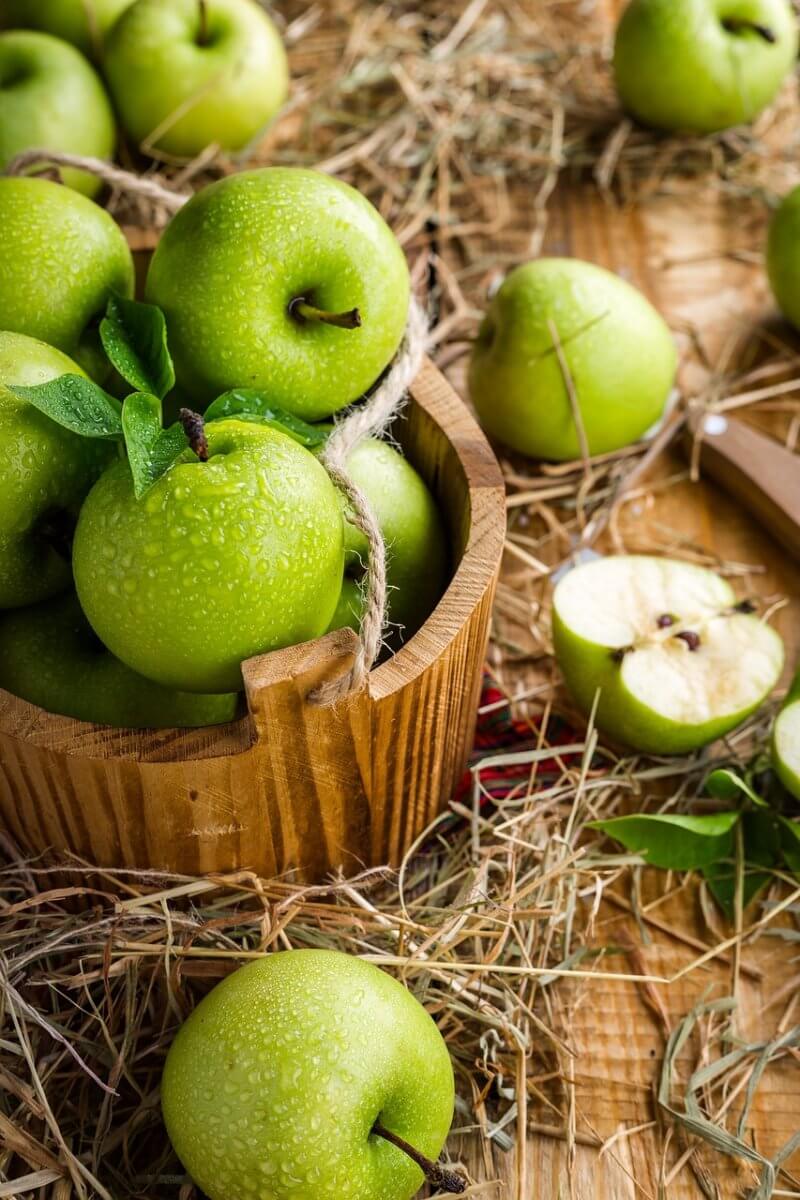
Jicama as substitutes for Asian pears
This may be an unusual one for you, I certainly wasn’t sure about until I did my research. Jicama, also known as Mexican yam bean or Mexican turnip, is a root vegetable that belongs to the legume family. It is native to Central and South America but is now cultivated and enjoyed in various parts of the world. Jicama has a tan or brown, rough outer skin, while its flesh is crisp, juicy, and white.
The texture of jicama is often compared to that of a water chestnut or a crisp apple. It has a mild and slightly sweet flavor with a hint of nuttiness. Jicama is typically eaten raw and is appreciated for its refreshing and crunchy nature.
- Jicama has a crunchy and slightly starchy texture, similar to Asian pears. When using jicama as a substitute, aim for similar-sized pieces as you would with Asian pears in the recipe. You can slice, julienne, or dice jicama to match the shape and size required.
- While jicama has a milder and less sweet flavor compared to Asian pears, it can still provide a refreshing and crisp element to the dish. Take note that jicama doesn’t have the same fruity flavor profile, so adjust other flavors in the recipe accordingly. For instance, you might need to add a touch of sweetness or acidity to compensate.
- Jicama is often enjoyed raw, making it a great substitute for Asian pears in fresh salads and raw preparations. It adds a crisp and refreshing texture to the dish. Slice or julienne the jicama and incorporate it into fruit salads, vegetable slaws, or even as a standalone crunchy snack.
- Use Jicama to create flavorful salsas and dips, just like Asian pears. Combine diced jicama with other ingredients such as tomatoes, onions, cilantro, lime juice, and spices to create a tangy and crunchy salsa. Serve with tortilla chips or as a topping for various dishes.
- While jicama may not have the same juiciness as Asian pears, it can still be used in stir-fries and stir-fried rice dishes. Cut jicama into thin strips or cubes and cook it with other vegetables, proteins, and sauces for a satisfying and crunchy stir-fry.
- Spring Rolls and Wraps: Jicama can be an excellent addition to fresh spring rolls or wraps, adding a pleasant crunch and texture. Julienne the jicama along with other vegetables, herbs, and protein of your choice. Wrap them in rice paper or lettuce leaves for a refreshing and light meal.
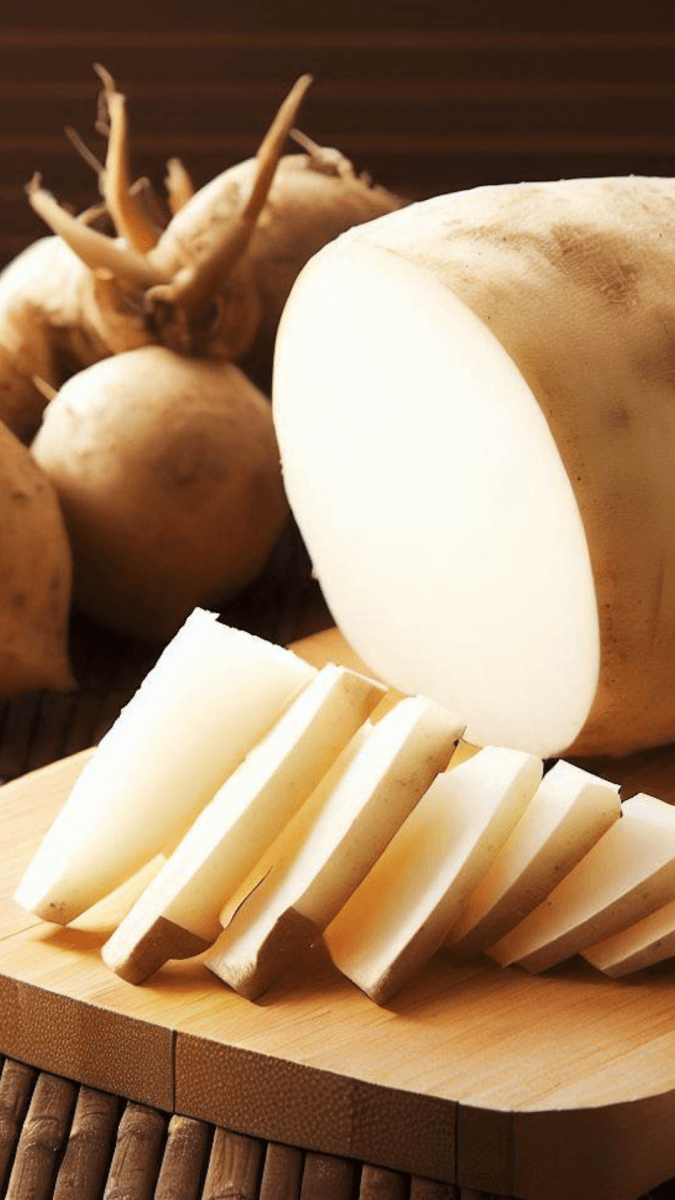
Persimmons
Persimmons are a type of fruit that are native to East Asia which are suitable as substitutes for Asian pears. Nowadays they are cultivated and enjoyed in different parts of the world. They have a unique and distinct flavor, and their appearance can vary depending on the variety.
- Persimmons have a soft and juicy texture when ripe, which differs from the crispness of Asian pears. Depending on the recipe, you can choose to use persimmons that are firm or fully ripe, adjusting for the desired texture. Keep in mind that the softer the persimmon, the more it will resemble the texture of Asian pears.
- Persimmons have a sweet and slightly tangy flavor. This sweetness can make them a suitable substitute for the sweetness found in Asian pears. However, persimmons have their own unique taste, so consider how it complements other flavors in the dish. Adjust the sweetness or acidity in the recipe as needed.
- Slice or dice the persimmons to match the size and shape of the Asian pears in the recipe. This will ensure a consistent texture and appearance throughout the dish.
- Persimmons can work well in fresh salads and raw preparations. They add a sweet and juicy element to the dish. Slice or dice the persimmons and incorporate them into fruit salads, green salads, or grain salads. Add them to cheese platters or you could also use them in wraps and sandwiches.
- Persimmons can be used in various baked goods and desserts, just like Asian pears. They can be used in pies, tarts, bread, muffins, or cakes. Persimmons work particularly well in puddings and custards due to their soft texture and sweet flavor.
- Blend ripe persimmons into smoothies or juices for a sweet and refreshing beverage. You can combine them with other fruits, such as bananas or berries, and add yogurt or milk for a creamy texture.
- Persimmons pair well with warm spices like cinnamon, nutmeg, and ginger. Consider incorporating these flavors to enhance the overall taste when using persimmons as a substitute for Asian pears.
With some creativity, you can enjoy the sweet and distinct flavor of persimmons as a substitute for Asian pears in a variety of dishes.
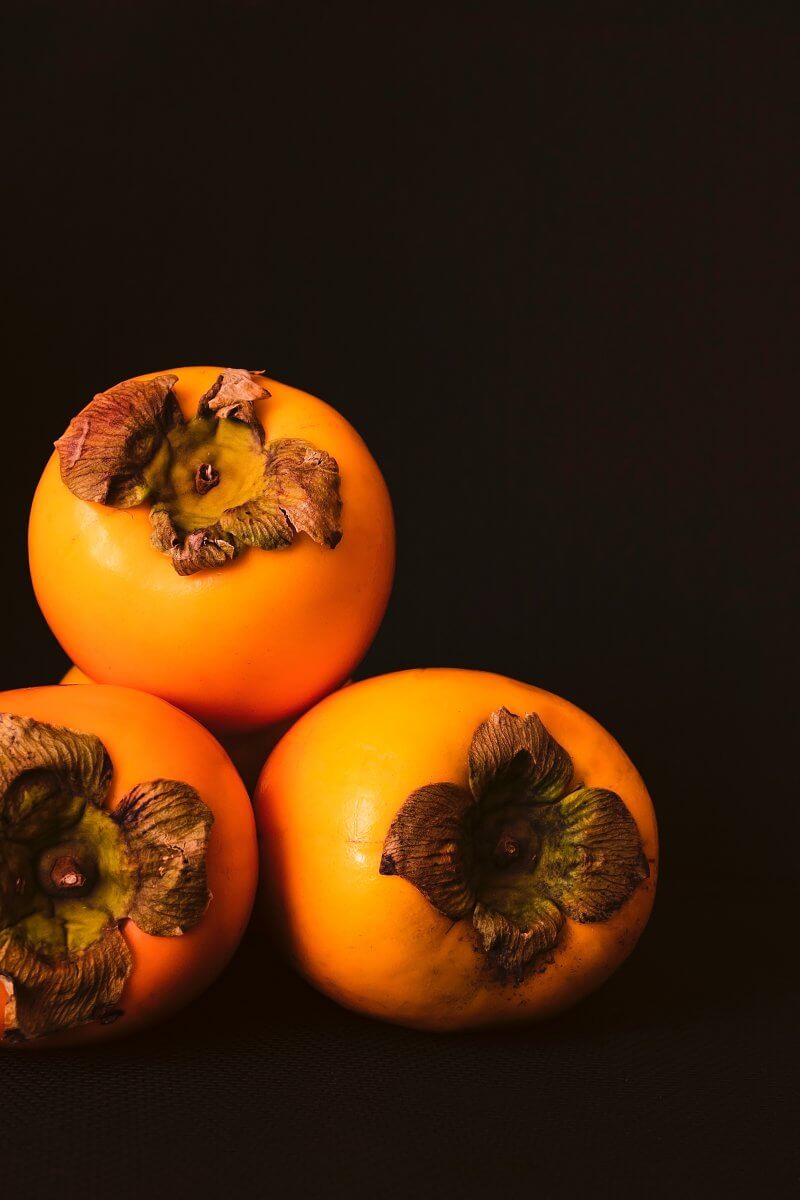
Summary for Asian pear substitutes
Okay – that’s you all sorted with suitable substitutes for Asian pears.
Here’s a summary of using different fruits as substitutes for Asian pears:
- Choose pear varieties like Bartlett, Anjou, or Bosc. They are softer and juicier when ripe. Adjust sweetness and tartness in the recipe if needed.
- Crisp apple varieties like Granny Smith, Honeycrisp, Gala, Pink Lady, or Fuji work well. They provide a similar crunch and can be used in both cooked and raw preparations.
- Jicama is a crunchy and slightly starchy root vegetable. It can be sliced, diced, or used in salads, slaws, and raw dishes. It doesn’t have the same fruity flavor but adds a refreshing element.
- Persimmons are soft and juicy when ripe. They have a sweet and tangy flavor. Use them in salads, baked goods, desserts, or blend them into smoothies and drinks.
Remember to consider the texture, flavor, and specific recipe requirements when using these fruits as substitutes for Asian pears. Experimentation and adjustments based on personal preference are encouraged.
